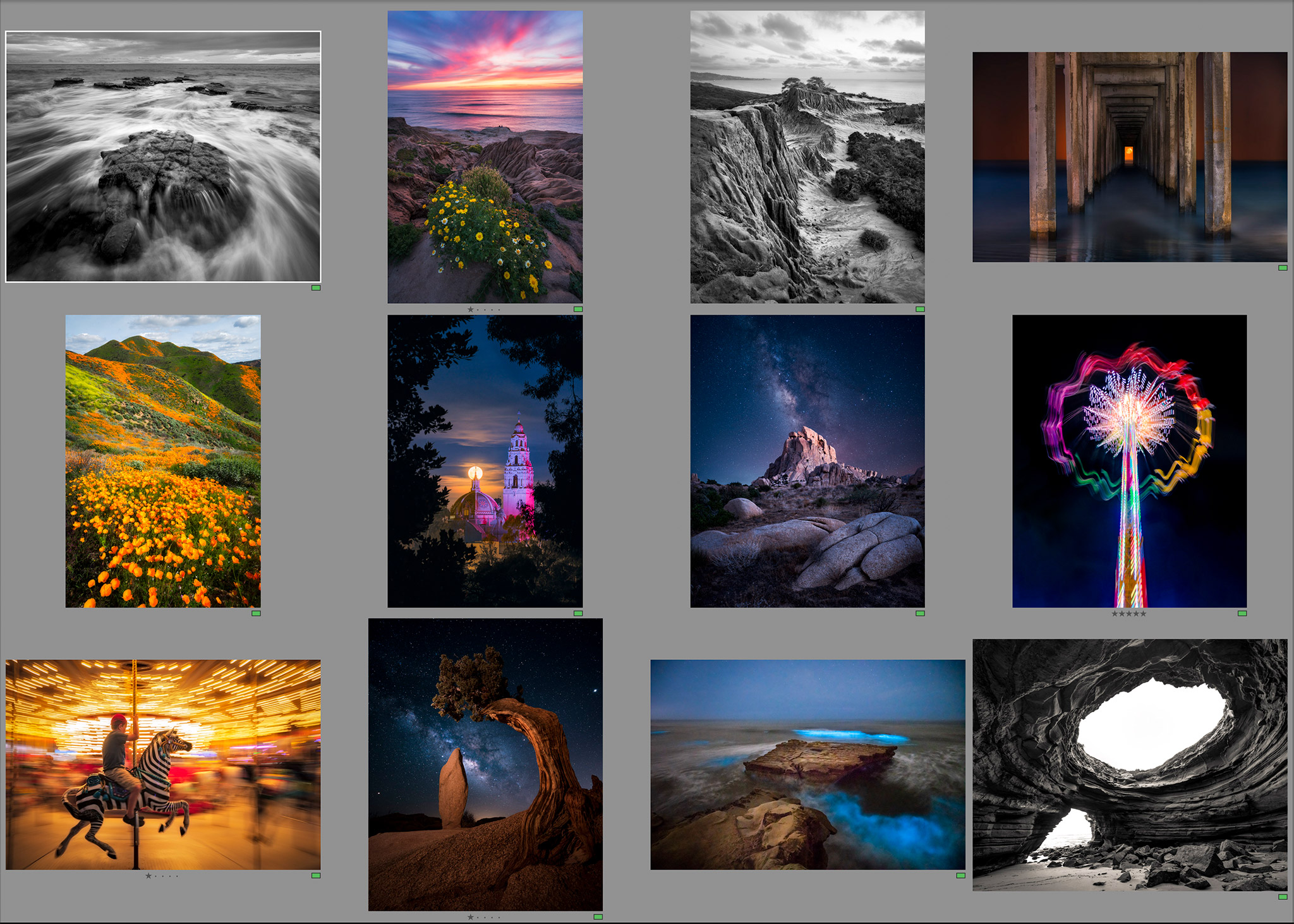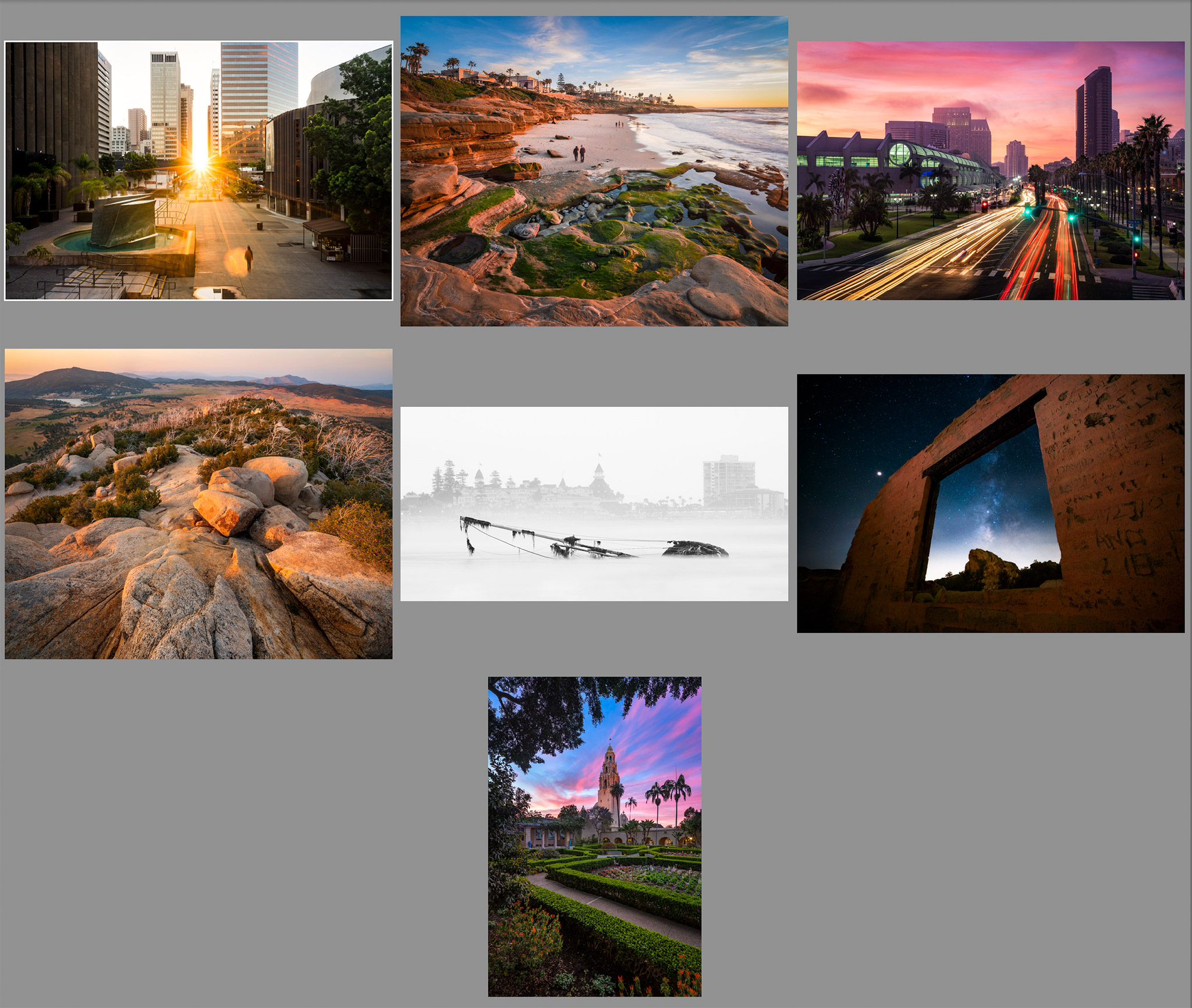San Diego Fair Photo Exhibit 2019 - Part 1
I thought I would write a few blog posts describing my experience participating in the photography exhibit at the San Diego County Fair. I participated the last two years and I’m doing so again this year. In this first part, I’ll provide background on the competition and go through my process for selecting images.
Background
The photography exhibit is one of the oldest and largest juried photographic competitions in the United States. This year is the 72nd show which would mean that it’s been running since at least 1948. The show accepts entries in over 30 categories covering the whole spectrum of photography, although there is a bias towards content pursued by hobbyists. For example, much of the exhibition space is devoted to landscapes, the wildlife categories allow captive zoo animals, etc.
The competition works in two stages or tiers. In tier 1, contestants submit digital images for review. Typically the show gets between 4-5000 entries at this point. Three judges are assigned to each category and they review the images in person and decide whether it advances to tier 2. Approximately 1000 images make the grade.
In the second tier, you submit a physical print which must be mounted on a 16x20" backing board (the only exception is the large print category where the print may be up to 40x40"). The judges check the prints for both image quality and presentation. If your print passes review, it will appear in the show. Generally very few images are eliminated at this stage and the judges do not need to pare down the candidates.
The physical prints are also used to determine category winners. The first place images from each of the categories are voted on by all judges to select the best in show.
My Motivation
To be transparent, I generally don’t see much point in most photo competitions and I almost never participate in them. There are many horrible ones which are essentially cash grabs by the organizers. Even worse, some competitions require you to sign over your intellectual property rights to the organizers so they can use the images commercially without compensation. However, even for legitimate competitions, like the San Diego Fair, I think it’s important to know why you are entering and what you hope to achieve. Otherwise you may spend a lot of time and money on an effort that doesn’t advance your photography.
Personally, I have a few reasons for entering the competition, these may or may not apply to you:
- My friends are participating and it’s a fun event to do as a group.
- The fair provides an opportunity to meet other local photographers and people active in the arts community.
- The fair provides local visiblity for your work. The attendence is typically around 1.5M visitors and if only a fraction visit the photo show, that is still tens of thousands of people seeing your work.
- Winning a category provides credentials that might be useful in the future (e.g. applying for an artist grant, shows, etc).
I did not include getting feedback on my images. Once you have your own style, the feedback from a competition such as this is not going to be useful as the judges aren’t aware of your goals or the context behind your work. If your work is non-traditional, or very different from past work accepted, you may want to think twice about entering.
A Note on Rejection
If you submit to the fair, or any photo competition, you should be prepared to deal with rejection. The fair rejects the vast majority of submitted images. So if you are rejected, do not let that get you down or take away the fun of participating. I want to emphasize a few points:
- Getting rejected does not mean your work is bad.
- Getting accepted does not not mean your work is good.
- Artistic competitions are inherently subjective and there is variability in the judging process.
If you get rejected it may very well be that your images need improvement. In fact, that’s probably true for the vast majority of the rejected images. But alternatively your images may simply be in a style that the judges do not like or have subjects that did not resonate with the judges. Or someone else may have submitted a more appealing image of the same subject.
Finally, you should recognize that the fair provides very little guidance on the amount of manipulation or editing (i.e. Photoshop) allowed in the competition. If your style of photography involves minimal manipulation you will have a harder time than photographers willing to do more. I have seen composites accepted outside of the digital art category, and even if they have a different subject than your photo, they are still competing with you because of the limited number of spots.
My Selection Process
Before starting to review my images, I decided on several rules for selecting images:
- I will only submit local images.
- I will only submit an image if it is an excellent fit for the category.
- I will only submit images that I think can place.
- I prefer images that are unique in some way. Usually this means composition but could also be due to rare environmental conditions.
- If the image is of an iconic subject, it needs to be exceptional.
About a week before the deadline, I went into my Lightroom catalog and started reviewing my master images from the past year. My master images are photos that I’ve finished editing and are generally good enough for me to share or put on my website. This is about 80 images. I then look at images in prior years and see if there are any I would like to submit.
This resulted in a short list of 20 images and all except one were photographed in the past year. After letting my mind stew for a few days, I then pared them down to a final 12 that I submitted:

The images were in the following categories: Color Scenic - Spring (1), Color Architecture or Cityscapes (1), Black & White Scenic (3), Documentary (1), Night (3), At the Fair (2), and Fair Theme - Oz-some (1).
Here are the images that made my shortlist but I ultimately decided not to submit. It’s possible I might submit these in a future year.

My reasons for not submitting these varied but here is an example. Consider the second image in top row, the picture of the La Jolla coastline. I really like this photograph and nominally this would go into Waterscapes, Seascapes, Waterfalls, Water Details, etc. as it’s a seascape and doesn’t fit into any of the other scenic categories, which are based on seasons. But the waterscapes category is dominated by images where water is the main component not an accent. While my image is a seascape, I know from past experience that even though the image might get accepted, it is unlikely to place.
Next Steps
The fair sends out notification for tier 2 (physical prints) on April 24. So I have few days to wait. In the meantime, I’ll start researching how I want to print and display my images that advance.
You can read Part II here.